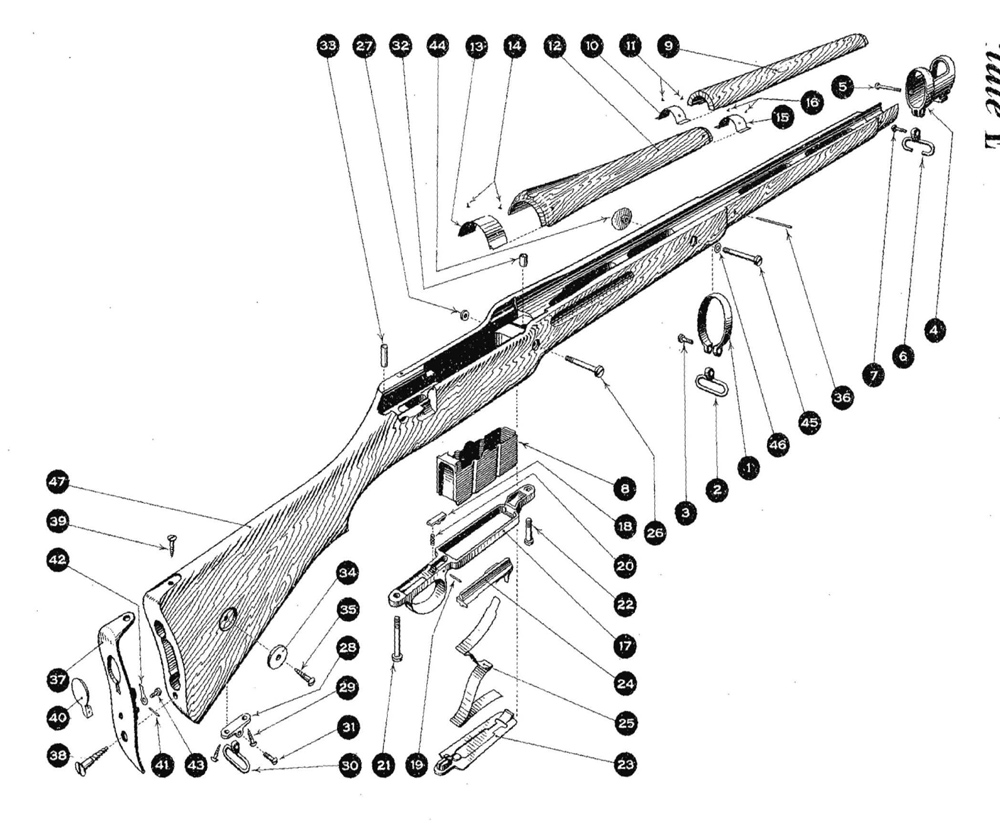

Effective mass production in Britain during World War I was impossible, and so the P'14 became a de facto afterthought. 303 British round led to the Pattern 14 Rifle (P'14), which was fed from a five-round internal magazine by five-round stripper clips. Adapting the design (with largely cosmetic alterations aside from chamber and extractor redesign) to fire the standard. The outbreak of World War I led to the abandonment of the effort to introduce a smaller caliber rimless cartridge for purely practical reasons.

The trials took place in Britain, Ireland, Egypt and South Africa and at the end, the Chief Inspector of Small Arms recommended a number of changes, which resulted in a quantity of 6 improved Pattern 1913 rifles being manufactured between March and April 1914.
#PATTERN 14 ENFIELD STOCK TRIAL#
The troop trial rifles left handed rifling twist rate was 10 in (254 mm), 5 grooves, groove depth. The rifle was distributed to the army as the Rifle, Magazine, Enfield. By the end of 1912, 508 rifles had been completed, and by the end of January 1913, 1,251 had been manufactured. At the end of 1912, it was decided to put the latest incarnation of the design into limited production for troop trials in 1913 and 1,000 were ordered from RSAF. Numerous changes to the rifle and the cartridge led to eleven Pattern 1911 and Pattern 1912 rifles being manufactured. Problems with pressure and jacket fouling in the bore resulting from the high velocity round led to the cartridge being redesigned. 276 was adopted in mid-1911 for further testing. Initially the RSAF designed the new rifle, at this point the Pattern 1911, around two calibres the. 276 Enfield (7×60mm) rimless bottlenecked rifle cartridge for which the Pattern 1913 Enfield action was designed. This rifle was presented to the Small Arms Committee on 3 April 1911 by the Assistant Superintendent Carnegie, and the Chief Designer Reavill.

In 1911, the Royal Small Arms Factory (RSAF) at Enfield, the British Government's design and production facility, produced a modified Mauser-pattern rifle for a similar cartridge, the. In response, Birmingham Small Arms (BSA) submitted a design chambered for a rimless high-velocity cartridge. The main changes called for a Mauser-style action and a one-piece stock (a cheaper and more serviceable option). In August 1910, the Small Arms Committee, which had been responsible for the adoption of the Short Magazine Lee–Enfield, was asked by the Director of Artillery to produce a new specification for a service rifle. This experience prompted the War Office to develop its own "magnum" round in 1910, using a. Introduction of the P'13 was rendered impractical by the outbreak of the First World War.ĭuring the Second Boer War, the British Army had been faced with expert Boer marksmen equipped with the Mauser Model 1895, in 7×57mm caliber. 276 Enfield rimless round, which was more powerful than the service-issued. An advanced chamber design allowed for a high-velocity. The weapon was to serve as a replacement for the Short Magazine Lee–Enfield (SMLE). The Pattern 1913 Enfield (P'13) was an experimental rifle developed by the Royal Small Arms Factory for the British Army as a result of its combat experience in the Second Boer War from 1899 to 1902. Manual, as determined by skill of operator


 0 kommentar(er)
0 kommentar(er)
